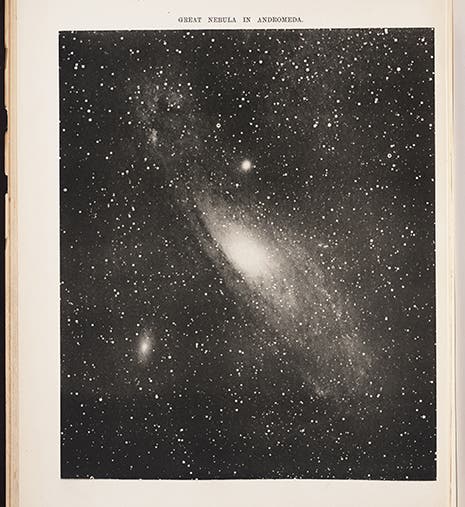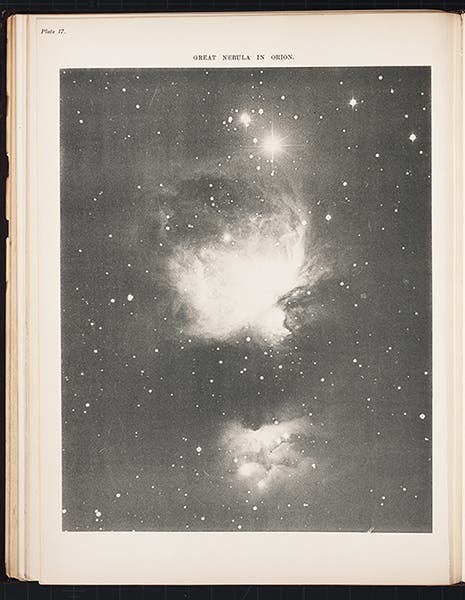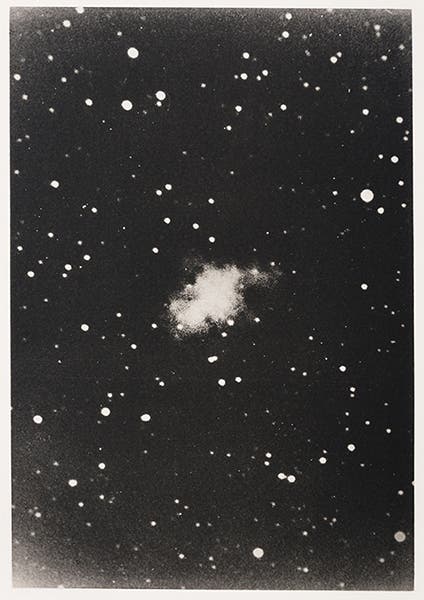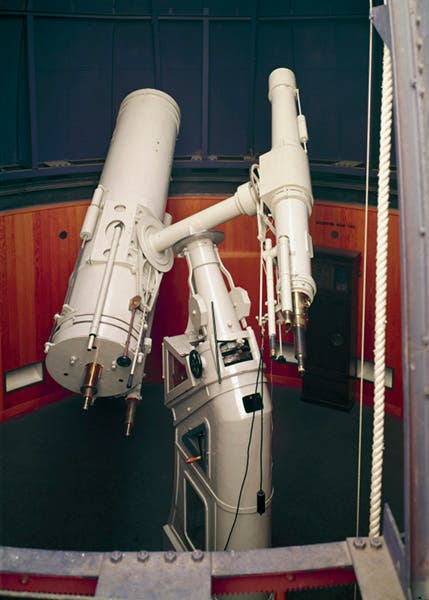Scientist of the Day - Isaac Roberts
Isaac Roberts, a Welsh engineer, manufacturer, and amateur astronomer, was born Jan. 27, 1829. After he made a tidy nest egg in Liverpool, Roberts retired so that he could take photographs of the heavens. He acquired a 20-inch reflector, mounted a 7-inch refractor on top as a tracking scope, attached a camera to the reflector, and set to work (second image). His first observatory was in Merseyside on the Irish Sea, just north of Darwin country, and then around 1890 he moved everything to Crowborough in Sussex (Arthur Conan Doyle’s hometown, but whether the two ever met, we have not been able to determine). For an amateur, Roberts took some spectacular photographs – indeed, they were better than any exposures taken by professional astronomers at the time.
In 1888, he took the first photograph of M31, the Andromeda nebula, which showed it to have a spiral structure (first image). About the same time, he made several exposures of the Orion nebula that are remarkably clear and detailed (third image), especially when one notes that the very first photo of the Orion nebula was made only 8 years earlier, and it was just a fuzzy blob. In 1893, Roberts published a book, Selection of Photographs of Stars, Star-Clusters, and Nebulae, containing a selection of his best prints, and he followed it with a second volume in 1899. The view of the Crab nebula, M1, is from this second volume (fourth image). This work really marks the beginning of modern astrophotography. We have a set in our History of Science Collection.
In 1896, Roberts met a French astronomer, Dorothea Klumpke, and they married in 1901. The marriage was cut short after only 3 years, by Roberts’ sudden death in 1904 of a heart attack, but in that time, the two planned a definitive photographic study of a number of nebulous areas of the heavens that had been identified by William Herschel. Dorothea brought this work to a drawn-out but successful conclusion; it was published in 1929, as Isaac Roberts' Atlas of 52 Regions, a Guide to William Herschel's Fields of Nebulosity. We do not have this work in our collection, and we should. Dava Sobel wrote a lovely post on Dorothea Klumpke Roberts for us several years ago, where you may also see a portrait of Isaac, for which we ran out of room here.
Roberts’ telescopes, which were made by the Howard Grubb firm of Dublin, are today on display in the Science Museum in London (image just above). There is a statue of Conan Doyle at Crowborough Cross (image just below); there ought to be one of Isaac Roberts right next to it.
Dr. William B. Ashworth, Jr., Consultant for the History of Science, Linda Hall Library and Associate Professor emeritus, Department of History, University of Missouri-Kansas City. Comments or corrections are welcome; please direct to ashworthw@umkc.edu.











